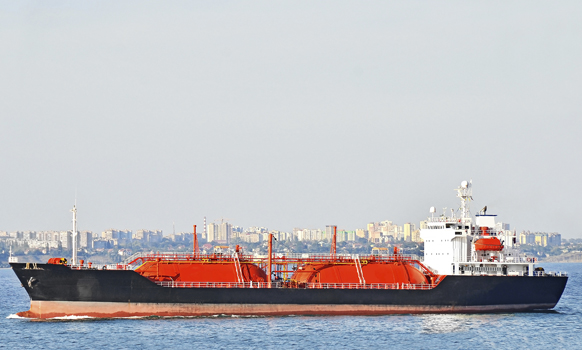Asia's record LPG shortfall to attract US exports
by Seng Li Peng
SINGAPORE (Reuters) - Asia's supply shortfall of liquefied petroleum gas (LPG) will rise to record highs for at least the next two years, drawing ever more US exports to fill the void.
The deficit between what Asia can supply and demand for LPG will rise to a record of 1.42 MMbpd in 2016, surpassing last year's 1.3 MMbpd, said David Wech, managing director of consultancy firm JBC Energy.
This deficit will increase to 1.5 MMbpd by 2017, he added. As a result, the region may draw almost 300 Mbpd of LPG from the US in 2016 and 340 Mbpd in 2017, said Wech.
US exports to Japan, South Korea, Singapore and China, the world's largest LPG consumer, already hit a record in 2015, averaging 248 Mbpd, data from the US Energy Information Administration showed.
Importers of US LPG include Japan's Astomos Energy Corp. and Eneos Globe Corp., South Korea's E1 and China's Unipec.
"Since 2009, every year has seen a new all-time high in Asia's LPG deficit due to strong LPG demand growth," said Wech.

US-based Enterprise Products Partners and Phillips 66 are poised to fill Asia's demand, as they have either recently expanded their export capabilities or, in the case of Phillips, will be opening a new terminal later this year.
"In the case of South Korea, around 80% to 85% of the LPG imports are from the Middle East (Asia's key supplier) and 15% to 20% from the US, which will likely increase its share from this year. It will be an interesting market," said a LPG consumer.
The US holds a price advantage over Middle Eastern suppliers with propane at the Mont Belvieu, Texas, hub at 43 cents/gal, or about $230/metric t, although that does not include freight for the voyage to Asia. That compares to the current contract price from Saudi Aramco at $283/metric t.
LPG is a mixture of two gases, butane and propane. Asian consumers primarily use the fuel for cooking and heating, but the gas also powers cars and is used as a petrochemical feedstock.
Asia's growing dependence on US LPG may mean higher propane and butane prices for American consumers as exports pull supply away, analysts at Barclays Capital said in a March 28 note.
"As supply and demand fundamentals continue to improve due to increased export levels and domestic (US) demand, we believe ethane and propane are well positioned," said Barclays.
PETROCHEMICALS DRIVE ASIAN DEMAND
Asia's demand needs will steer the market direction.
The region's total LPG consumption, including the Indian subcontinent, is projected to reach 113 metric MMt in 2016, or about 3.6 MMbpd, said Yanyu He, director of Natural Gas Liquids Research at IHS, adding that the region has the most acute supply shortages in the world.
This is up from 105 metric MMt in 2015, and it will grow to 121 metric MMt next year, said He.
Residential and commercial users accounted for about 65% of the Asian LPG market in 2015, though this will ease to about 64% in 2017, said He.
The petrochemical industry will drive Asian LPG demand growth to meet the increasing need for plastics, especially as a packaging material to feed the e-commerce sector.
Petrochemical consumption will account for 15% of total Asian LPG usage by 2017, said IHS's He, up from 11% in 2015.
New specialized propane dehydrogenation (PDH) plants that use LPG to produce propylene, a precursor to plastics, that have been built recently in South Korea and China are driving that growth.
Additional petrochemical demand occurs when LPG prices drop to at least $50/metric t lower than naphtha, a light oil product also consumed by the industry. Currently the gap is about $35/metric t.
Naphtha crackers can replace up to 15% of their naphtha with LPG when the economics work. An average of about 750 metric Mt/month of LPG could be used this way, said He.
LPG can be extracted from gas fields and during the crude refining process. Typically, a crude oil grade will yield less than 5% LPG when run through a distillation unit.
With a large number of natural gas fields and extensive crude distillation capacity, the Middle East has traditionally supplied Asian LPG needs.
The Middle East's LPG surplus after meeting domestic consumption, most of which will go to Asia, will tick up to 1.25 MMbpd this year from 1.23 MMbpd in 2015 and reach 1.26 MMbpd in 2017, said Wech.
(Additional reporting by Florence Tan in Singapore, Osamu Tsukimori in Tokyo, Rebecca Jang in Seoul and Chen Aizhu in Beijing. Editing by Christian Schmollinger.)






Comments